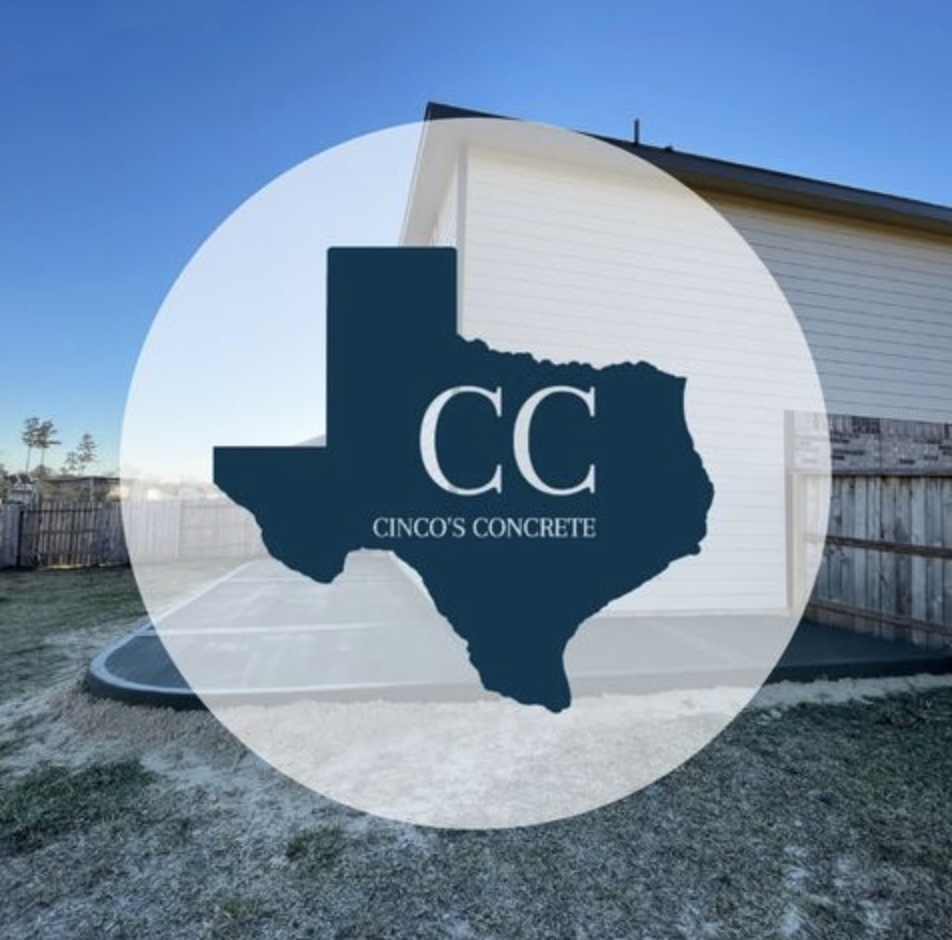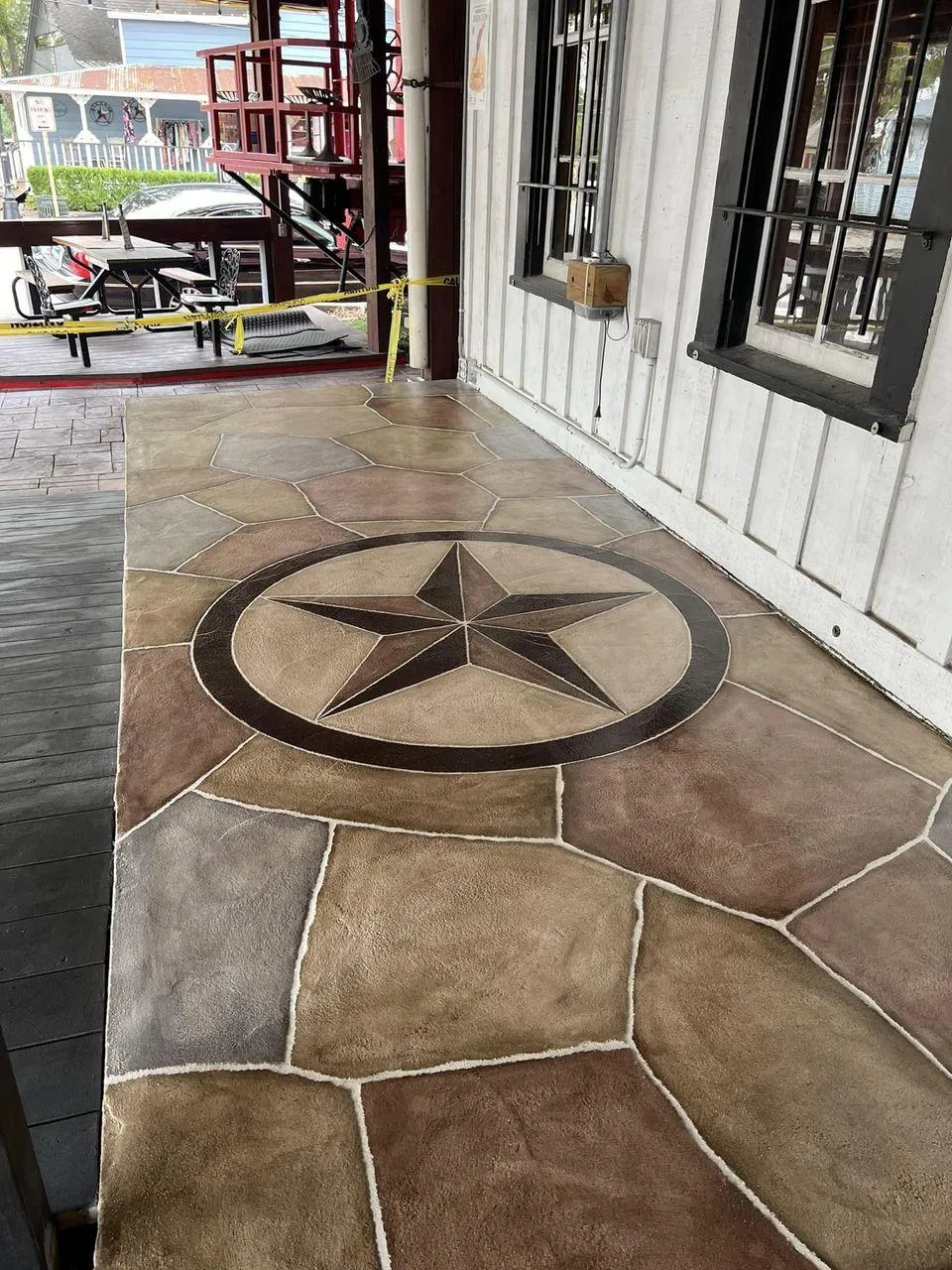
What is the most cost effective concrete patio?
What is the Most Cost-Effective Concrete Patio?
The most cost-effective concrete patio is typically a standard, broom-finished slab. This option provides excellent durability and functionality for the lowest possible upfront investment. It prioritizes essential features over elaborate aesthetics.
On average, a basic broom-finished concrete patio can range from $4.50 to $8.00 per square foot. This price includes standard site preparation, a 4-inch thick slab, and basic labor. For a 400-square-foot patio (20x20 feet), this equates to approximately $1,800 to $3,200.
This type of patio is cost-effective because it minimizes expensive materials and complex labor. It focuses on the core purpose of a patio: a stable, usable outdoor surface. It avoids the significant cost increases associated with decorative finishes or intricate designs.
While aesthetically simpler, a properly installed basic concrete patio offers impressive longevity. It provides a solid foundation for outdoor living. Its low maintenance requirements also contribute to long-term savings.
Understanding Cost-Effectiveness Beyond Initial Price
Defining "cost-effective" goes beyond just the lowest initial price tag. A truly cost-effective investment delivers maximum value over its entire lifespan. This means considering both upfront expenses and long-term implications.
Upfront vs. Long-Term Costs
A cheap initial installation can sometimes lead to higher costs down the line. Skimping on site preparation or material quality might result in early cracking. It could also lead to settling, or even complete failure of the patio.
Such issues necessitate costly repairs or even full replacement. These expenses quickly negate any initial savings. Investing a little more upfront for quality often prevents larger future expenditures.
Value of Durability
A durable concrete patio is inherently more cost-effective. Concrete is known for its strength and longevity. A well-installed concrete slab can last 30 to 50 years or even more.
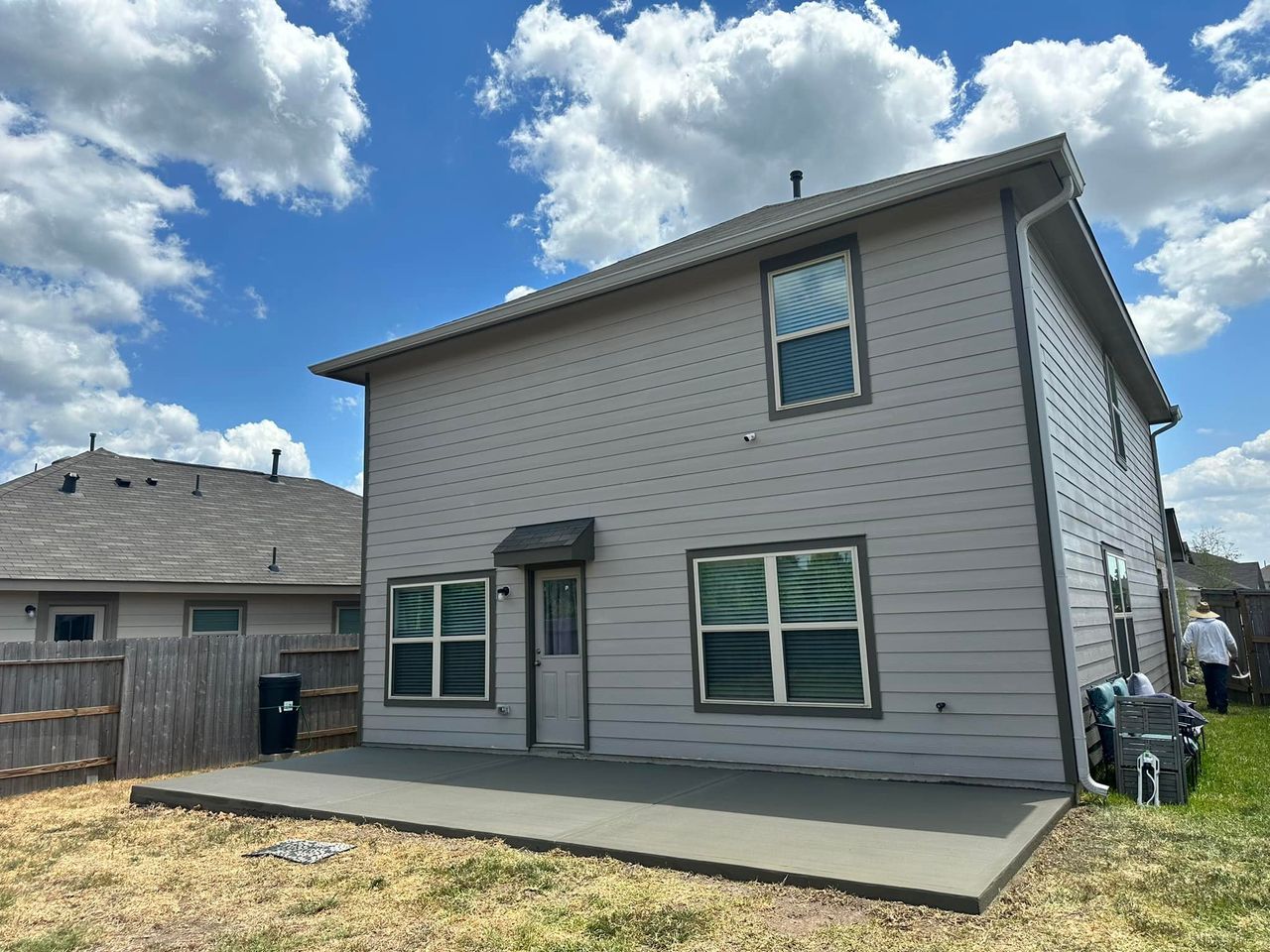
Choosing quality materials and professional installation ensures this extended lifespan. This reduces the need for frequent repairs or costly replacement cycles. It represents excellent value over decades of use.
Maintenance Savings
The most cost-effective patios require minimal ongoing maintenance. Basic concrete is relatively low maintenance. It needs occasional cleaning and periodic sealing.
Compare this to wood decks requiring regular staining or paver patios needing weeding and joint sand replenishment. Lower maintenance means less time, effort, and money spent on upkeep.
Resale Value
A quality concrete patio adds tangible value to your home. It enhances curb appeal and provides desirable outdoor living space. This makes your property more attractive to potential buyers.
A well-maintained, durable patio can contribute to a higher asking price. It also potentially leads to a quicker sale. This return on investment is a key component of true cost-effectiveness.
The Most Cost-Effective Concrete Patio: The Basic Slab
To achieve the most cost-effective concrete patio, focus on essential elements. These include basic materials, simple designs, and a functional finish. This approach prioritizes durability and usability over decorative flair.
Material Costs: Keeping it Lean
The cost of concrete itself is a major component. For cost-effectiveness, select a standard concrete mix. A 2,500 to 3,000 PSI mix is typically sufficient for residential patios. This provides adequate strength without unnecessary expense.
Ordering the precise volume of concrete minimizes waste and short load fees. For example, a 4-inch thick, 20x20 patio requires about 4.94 cubic yards. Avoid over-ordering, which adds to material and disposal costs.
Essential materials like basic lumber for forms and standard wire mesh for reinforcement are also part of this. These are relatively inexpensive but crucial for structural integrity.
Basic Finish: Broom or Smooth Trowel
The finishing technique significantly impacts cost. Basic finishes require less specialized labor and no additional material costs beyond the concrete itself.
Broom Finish: This is the most common and cost-effective finish. A broom is dragged across the wet surface. It creates a slightly textured, non-slip surface, which is ideal for safety and practical use. It requires minimal extra labor.
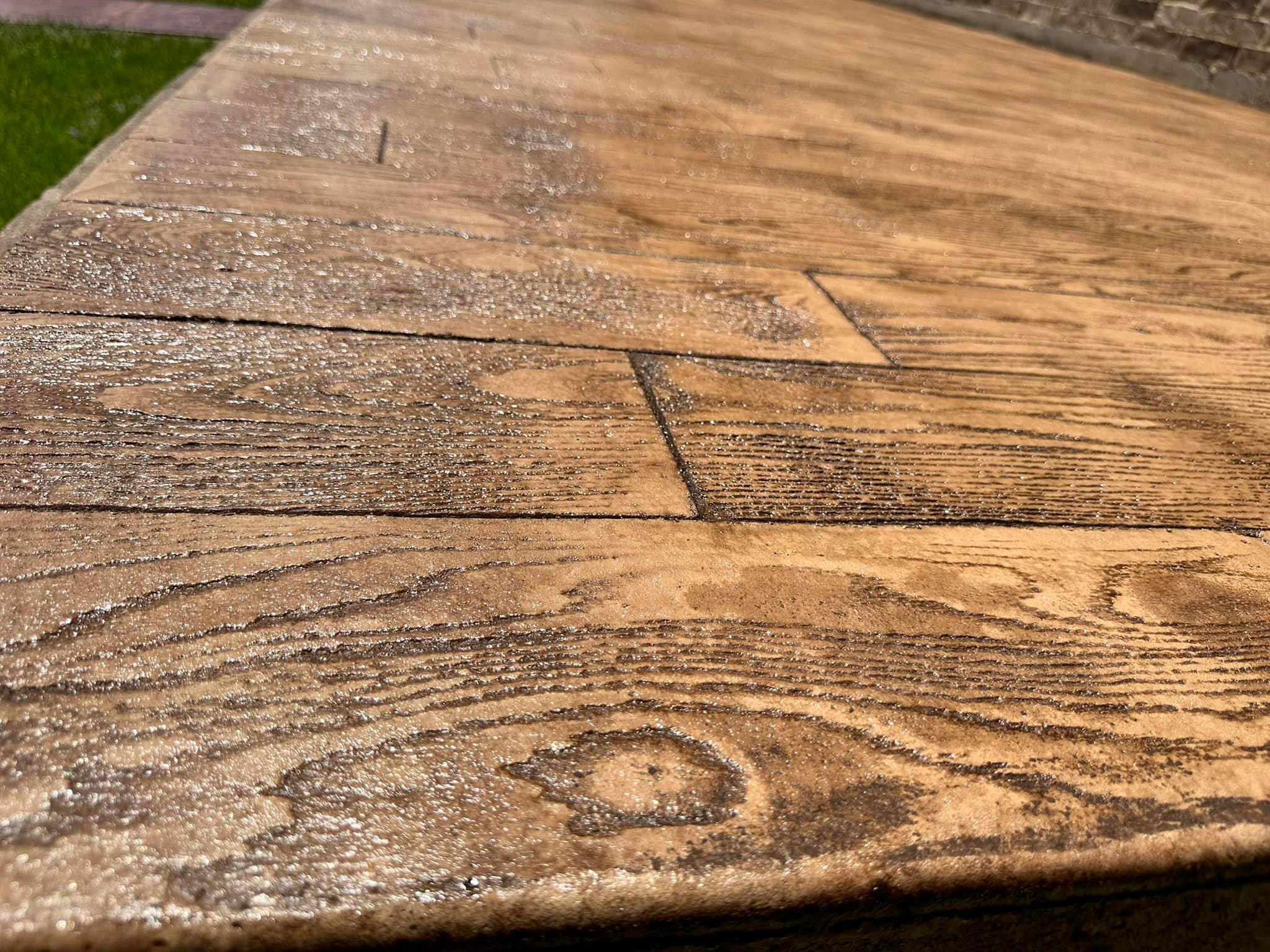
Smooth Trowel Finish: Achieved by skilled use of a hand or power trowel. This creates a dense, smooth surface. While slightly more labor-intensive than a broom finish, it remains highly cost-effective. However, it can be slippery when wet.
These basic finishes provide a functional, durable surface without the added expense of decorative options. They are the epitome of cost-effective design.
Standard Thickness: 4-Inch Slab
For most residential concrete patios, a 4-inch thick slab is the most cost-effective choice. It provides ample strength for foot traffic, patio furniture, and general outdoor use.
Going thicker (e.g., 5 or 6 inches) increases the concrete volume significantly. This adds to both material costs and the labor for excavation and pouring. Thicker slabs are only cost-effective if supporting very heavy loads, like a large hot tub or vehicle traffic.
For typical patio use, a well-prepared 4-inch slab is perfectly adequate. It offers the best balance of strength and material cost.
Simple Shape: Rectangular or Square
The shape of your patio directly influences formwork complexity and concrete waste.
Rectangular or Square Patios: These are the most cost-effective shapes. They require straightforward formwork. This minimizes labor time for setup and removal. Material waste is also significantly reduced.
Curves and Intricate Angles: These designs demand more skilled labor for custom formwork. They also lead to more material waste from cutting forms. While aesthetically pleasing, they are not cost-effective for a tight budget.
A simple, geometric shape is ideal for optimizing labor and material use. This keeps overall installation costs down.
Essential Site Prep and Sub-Base
Proper site preparation and a stable sub-base are non-negotiable for any concrete patio, regardless of budget. These steps are a cost-effective investment in preventing future problems.
Basic Clearing and Leveling: Removing light debris and ensuring the area is relatively level. This avoids costly excavation if not strictly necessary.
Adequate Sub-Base: A 4-6 inch layer of compacted gravel or crushed stone. This provides crucial drainage and a stable foundation. While it adds material and labor cost upfront, it prevents expensive repairs from settling.
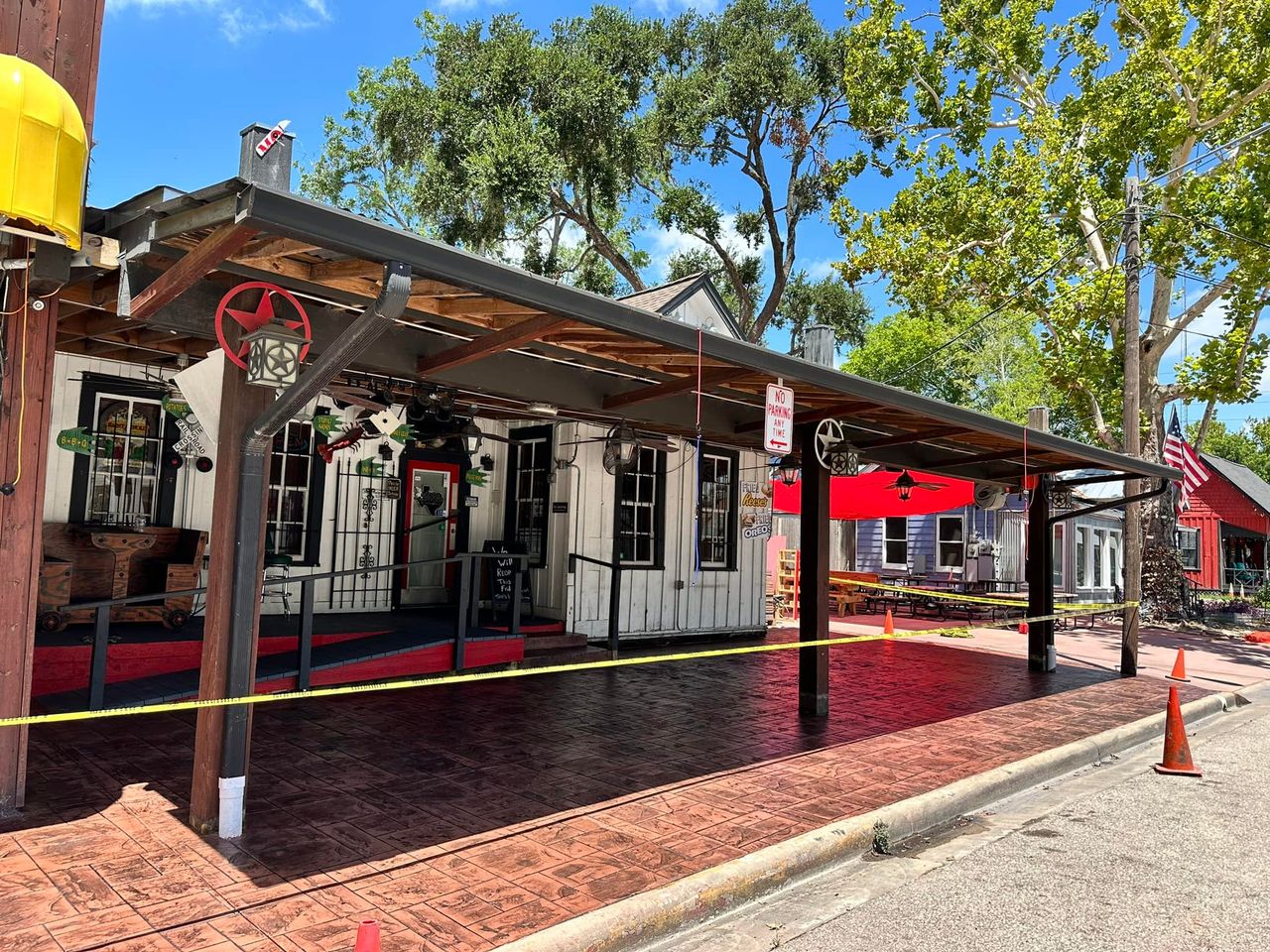
Reinforcement (Wire Mesh): Using wire mesh is a very cost-effective way to add tensile strength to the slab. It helps distribute stress and minimize cracking. It's a small material cost with significant long-term benefits.
Skipping these fundamental steps can lead to costly structural issues later. Investing in proper foundation work is always cost-effective.
Optimizing Delivery & Accessibility
Minimizing delivery complexities contributes to cost-effectiveness.
Good Site Access: Ensure the concrete truck can get as close as possible to the pour site. This reduces the need for expensive concrete pumps or labor-intensive wheelbarrowing.
Proper Volume: Ordering the correct amount of concrete prevents costly short load fees for small orders or waste from over-ordering.
Coordinating these logistics with your concrete patio contractors is essential. It ensures a smooth and efficient pour.
Factors That Increase Cost (and Decrease Cost-Effectiveness for Basic Needs)
While desirable for aesthetics, certain features significantly increase the cost of a concrete patio. While they add value in other ways, they move away from the "most cost-effective" definition based purely on functional utility and lowest long-term cost of ownership.
Decorative Finishes: The Biggest Cost Driver
The primary factor pushing a concrete patio beyond "most cost-effective" is the addition of decorative finishes. These options add significant material and labor expenses.
Stamped Concrete: Mimics stone or brick. It requires special molds, skilled labor, and often multiple coloring steps. It adds $5-$15+ per square foot.
Colored Concrete: Integral color, dry-shake hardeners, or stains. These involve extra materials and application techniques. They add $0.50-$8 per square foot.
Exposed Aggregate: Involves special aggregates and a wash-off process. It adds $3-$8 per square foot.
These finishes are beautiful and add immense curb appeal. However, they are a premium investment. They are not necessary for a functional, cost-effective patio.
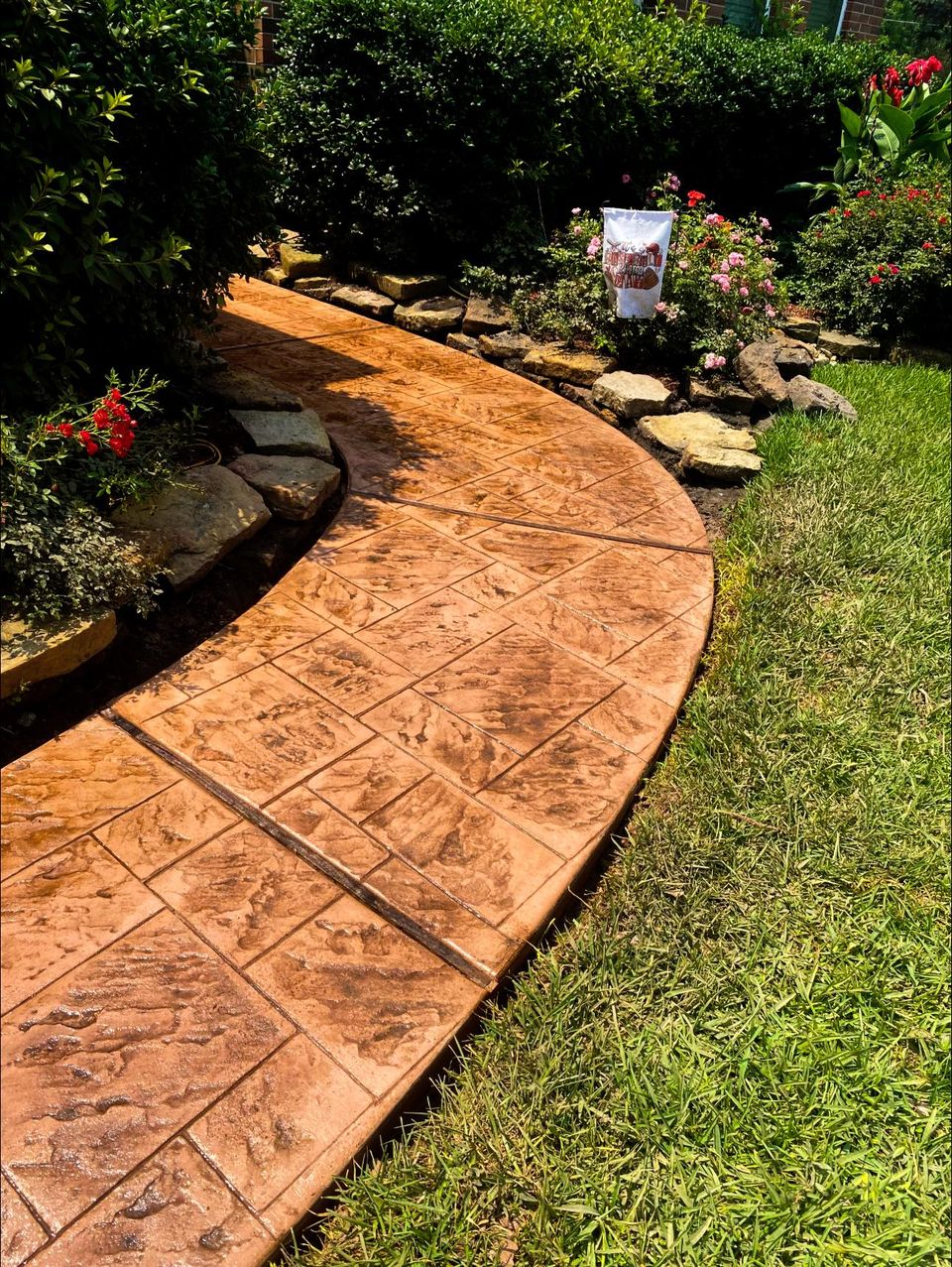
Excessive Thickness or High PSI for Basic Use
While thicker slabs and higher PSI concrete mixes are beneficial for heavy loads, they are not cost-effective for a typical residential patio.
5-inch or 6-inch Slab: If your patio is only for light foot traffic and furniture, an extra inch or two of concrete is unnecessary expense. It increases material and excavation costs.
4,000 PSI Concrete: While stronger, this mix is overkill for most patios. It costs more per cubic yard than standard 2,500-3,000 PSI concrete.
Only invest in these upgrades if your patio will genuinely experience heavy loads or extreme conditions. Otherwise, it's an inefficient use of budget.
Complex Designs and Additional Features
Adding intricate designs or built-in elements significantly increases labor and material costs. These features move the patio away from being purely "cost-effective" for basic needs.
Curves and Multiple Levels: More complex formwork, more concrete cutting, and increased labor time.
Built-in Seating or Planters: Custom concrete structures require specialized forms and precise pours. They add hundreds to thousands of dollars per feature.
Integrated Fire Pits/Fireplaces: These are major additions. They involve substantial material and labor costs, easily adding thousands to the project.
Extensive Lighting/Electrical: While functional, integrating electrical conduits and fixtures requires licensed electricians and adds material costs.
These features are fantastic for customization and enhancing luxury. However, they are an investment in amenity, not in reducing the core cost of a functional patio.
Extensive Demolition or Difficult Site Challenges
Some site conditions, while unavoidable, drive up the project cost significantly. These challenges reduce overall cost-effectiveness if not budgeted for.
Removing Existing Structures: Demolishing an old patio, deck, or shed adds substantial labor and disposal fees.
Difficult Terrain: Very sloped, rocky, or heavily vegetated sites require more extensive and costly excavation.
Limited Access: If a concrete pump is absolutely necessary due to site constraints, its rental cost will be a major expense.
While these costs are necessary for some projects, they are external factors that increase the total price. They are not inherent to the "most cost-effective" patio design.
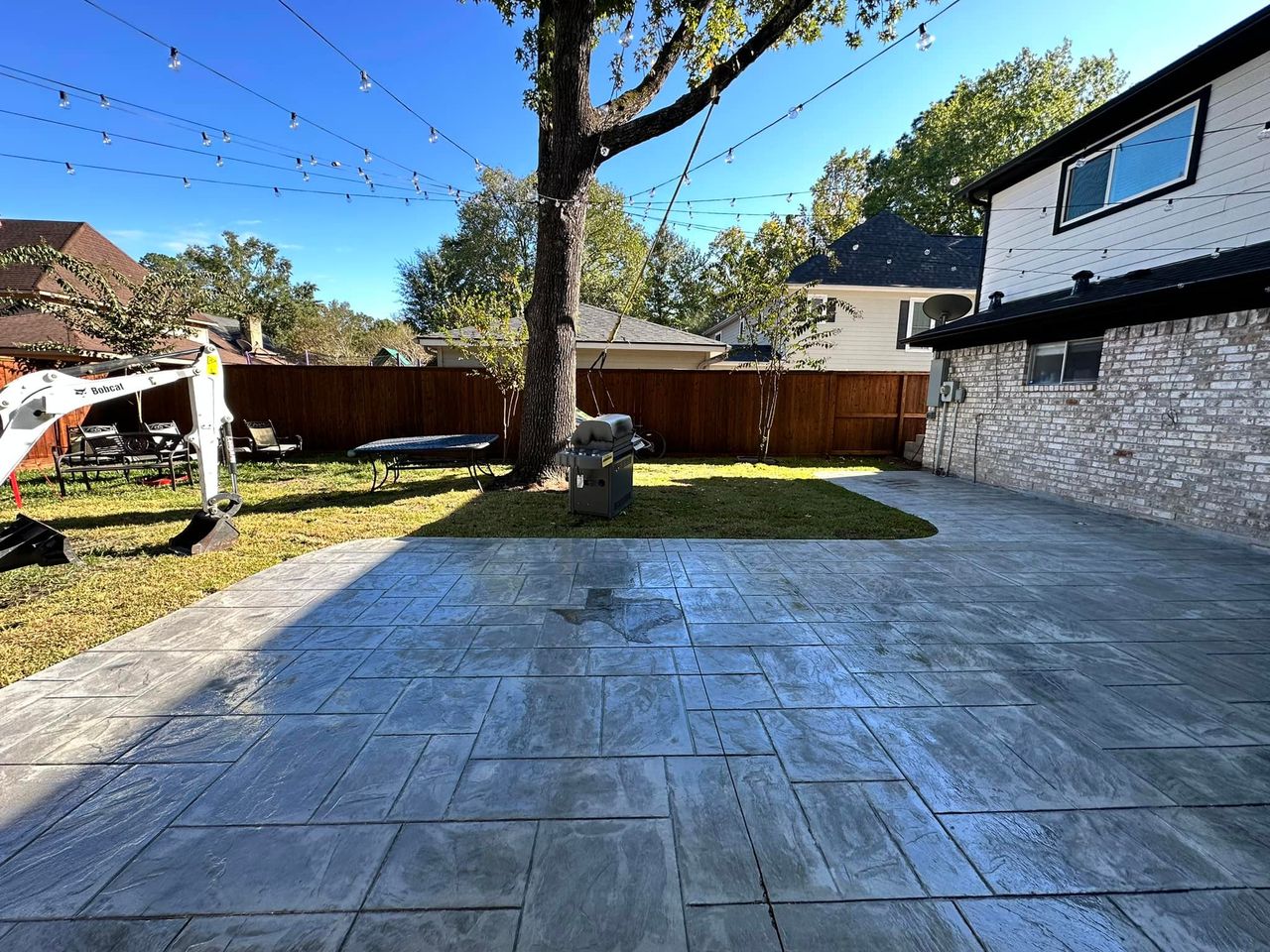
Poor Planning or Permit Issues
Lack of proper planning can lead to costly delays and re-dos. This decreases overall cost-effectiveness.
No Permits: Building without required permits can lead to fines, stop-work orders, and mandatory demolition.
Inaccurate Measurements: Ordering the wrong amount of concrete leads to waste or costly short load fees.
Poor Drainage Planning: Can cause water pooling, foundation issues, and future repair needs.
Careful planning and adherence to regulations save money by avoiding expensive mistakes.
Ensuring Cost-Effectiveness Through Installation Quality
Even the most basic concrete patio will not be cost-effective if installed poorly. Quality installation is paramount for long-term durability and minimal maintenance. This saves money in the long run by avoiding expensive repairs.
The Importance of a Solid Foundation
The sub-base beneath your concrete patio is its foundation.
Proper Excavation: Ensures adequate depth for the slab and sub-base.
Compacted Gravel/Crushed Stone: A 4-6 inch layer of compacted aggregate provides stable support and drainage. Skipping this step or using inadequate compaction will lead to settling. Settling causes unsightly cracks and potentially costly structural issues.
Proper Grading: Ensures water drains away from the patio and your home. Incorrect grading leads to water pooling, which can cause erosion or foundation damage.
Investing in these initial steps is a highly cost-effective decision. It prevents future problems that are far more expensive to fix.
Proper Reinforcement and Control Joints
Concrete naturally expands and contracts with temperature changes and moisture. This can cause cracking.
Reinforcement: Wire mesh or rebar adds tensile strength to the slab. It helps to hold the concrete together if cracks do form. This minimizes their spread and impact.
Control Joints: These are strategically placed cuts in the concrete. They create weak points where cracks are intended to form, directing them in straight, less noticeable lines.
Properly implemented reinforcement and control joints are vital. They prevent random, unsightly, and potentially damaging cracks. This avoids costly aesthetic repairs or structural concerns.
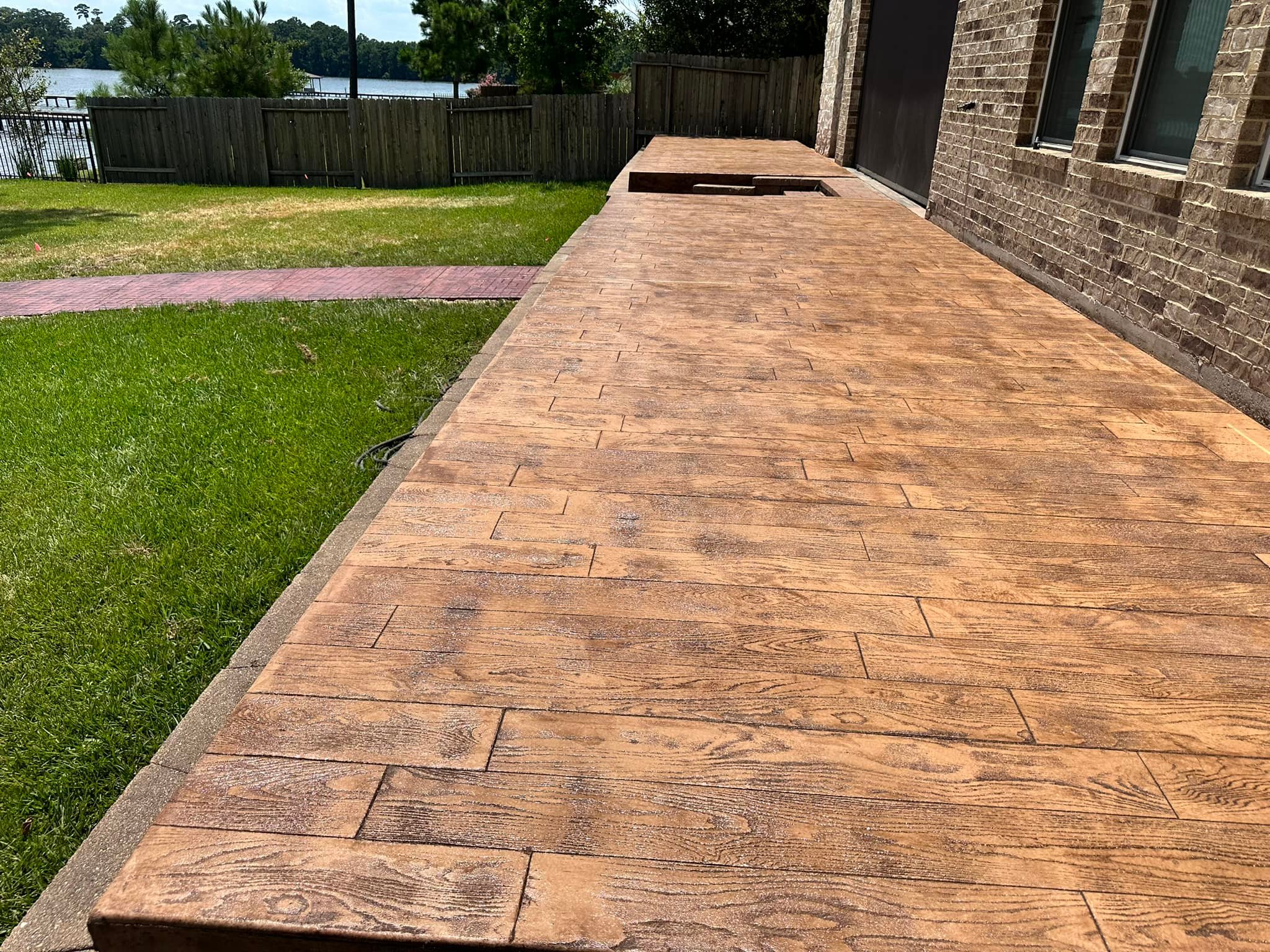
Curing and Sealing
Proper curing and sealing are often overlooked but are critical for concrete's long-term performance.
Curing: Involves keeping the concrete moist for several days after pouring. This allows it to gain maximum strength and hardness. Improper curing leads to weaker concrete, increased cracking, and dusting.
Sealing: Applying a quality concrete sealer every few years protects the surface from moisture, stains, and UV damage. It extends the patio's life and keeps it looking good.
These are low-cost preventative measures. They significantly extend the lifespan of your patio. They also reduce the likelihood of costly future issues.
Hiring Qualified Concrete Patio Contractors
For a truly cost-effective patio, professional installation is almost always the best choice. While DIY saves labor costs, the risks of errors for a concrete pour are high. Mistakes can lead to costly re-dos or a patio that doesn't last.
Professional concrete patio contractors bring:
Expertise: Knowledge of soil conditions, concrete mixes, and proper techniques.
Efficiency: The right crew and equipment to get the job done quickly and correctly.
Quality: Adherence to best practices, ensuring a durable, long-lasting product.
Warranty: Many contractors offer a warranty on their work, providing peace of mind.
For homeowners searching for "concrete patio contractors near me," finding a reputable professional is key to achieving genuine cost-effectiveness. They prevent the hidden costs of poor workmanship. In Houston, Texas, Cincos Concrete LLC is an example of a reliable choice. They understand the local challenges and best practices.
Local Considerations for Cost-Effectiveness in Houston, Texas
Specific local conditions in Houston, Texas, influence what makes a concrete patio most cost-effective. Addressing these factors properly upfront prevents more significant expenses down the line.
Expansive Clay Soils
Houston is known for its expansive clay soils. These soils swell significantly when wet and shrink when dry. This movement puts considerable stress on concrete slabs.
Cost-Effective Mitigation: While adding to initial cost, it is crucial to implement proper sub-base preparation. This includes adequately compacted gravel. Using sufficient reinforcement (rebar often recommended over just wire mesh for larger slabs). These steps are highly cost-effective. They prevent costly future heaving, cracking, and structural damage.
A cheap initial pour on unaddressed expansive soil will almost certainly lead to expensive problems. Investing in the right foundation is the most cost-effective approach here.
Climate Challenges
Houston's hot and humid climate affects concrete curing.
Rapid Drying: Hot, dry, and windy conditions can cause concrete to dry too quickly. This leads to surface cracking and reduced strength.
Professional Curing: Experienced concrete patio contractors know how to manage curing in these conditions. This might involve wet curing, curing compounds, or scheduling pours for cooler times.
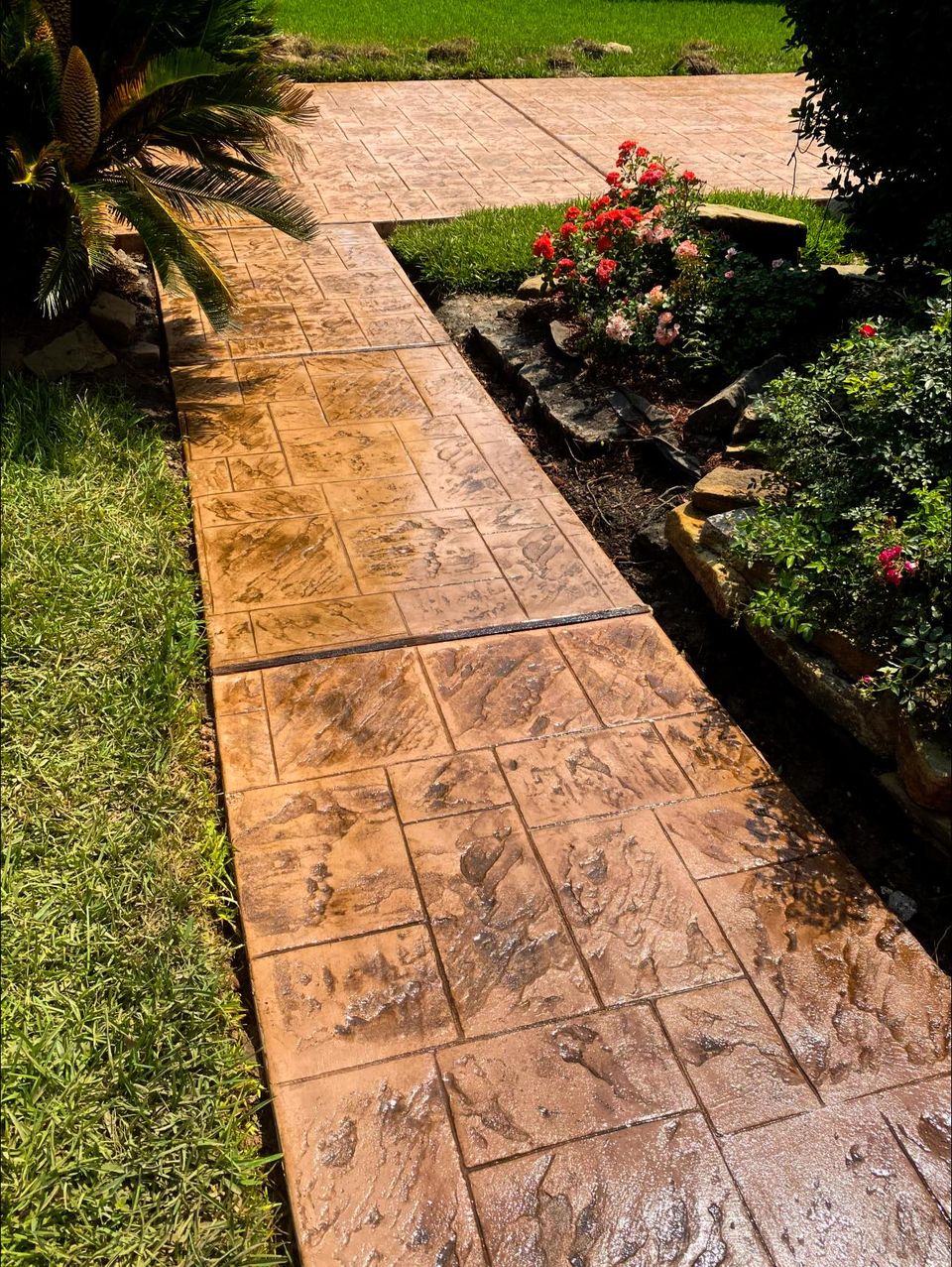
These practices, employed by skilled contractors, prevent long-term issues. They ensure the concrete reaches its full strength and durability.
Material and Labor Market
Houston's booming construction market impacts material and labor availability and pricing.
Demand: High demand can drive up costs for concrete, aggregates, and skilled labor.
Local Suppliers: Establishing relationships with local concrete suppliers can sometimes secure better pricing.
Getting multiple quotes from "concrete patio contractors near me" is especially important in a competitive market. This ensures you get a fair and cost-effective price.
Drainage Solutions
Houston experiences heavy rainfall. Effective drainage is paramount for a cost-effective patio.
Proper Grading: Ensuring the patio is sloped correctly away from the house and towards a drainage point is fundamental. This prevents water pooling.
Integrated Drains: Adding surface drains or even French drains can be a cost-effective way to manage water. This protects both the patio and your home's foundation from water damage.
While adding to the initial cost, inadequate drainage can lead to very expensive water-related issues down the road. This makes proper drainage a highly cost-effective investment.
Long-Term Cost-Effectiveness and Maintenance
The true cost-effectiveness of a concrete patio is realized over its lifespan. Minimizing ongoing expenses through proper maintenance is key.
Regular Cleaning and Sealing
These are the most impactful and least expensive maintenance tasks.
Cleaning: Simply sweeping debris and occasional washing with a hose and mild detergent prevents buildup. It keeps the patio looking good and prevents stains.
Sealing: Reapplying a concrete sealer every 2-5 years protects the surface. It guards against moisture penetration, stains, and UV damage. This prevents spalling and extends the patio's lifespan significantly.
These low-cost, routine tasks prevent much more expensive repairs.
Timely Small Repairs
Addressing minor issues promptly prevents them from escalating.
Hairline Cracks: Filling small cracks with a concrete crack filler is quick and inexpensive. This stops water penetration and prevents the crack from worsening.
Minor Spalling: Surface flaking can often be repaired with a concrete patching compound.
Proactive, small repairs are always more cost-effective than waiting for major damage.

Avoidance of Major Repairs
The most significant long-term cost savings come from avoiding major repairs or replacement.
Quality Installation: A patio built to industry standards with proper site prep, reinforcement, and curing is less likely to suffer severe cracking, settling, or structural failure.
Professional Expertise: This is why hiring reputable concrete patio contractors is so vital. Their upfront quality prevents future headaches and expenses.
The most cost-effective concrete patio is one you rarely have to worry about. Its upfront investment translates directly into long-term peace of mind and minimal future spending.
Case Study: Basic Patio vs. Decorative Patio (Cost-Effective Perspective)
Let's consider two hypothetical 400-square-foot concrete patios to illustrate cost-effectiveness.
Patio A: The Most Cost-Effective Choice
Description: Standard 4-inch slab, 3000 PSI concrete, wire mesh reinforcement, broom finish, simple rectangular shape. Properly compacted gravel sub-base.
Initial Cost (Houston): ~$5.50 per square foot = $2,200.
Maintenance: Occasional cleaning, sealing every 3-4 years.
Longevity: 30-50+ years with proper care.
Cost-Effectiveness: High. Provides excellent functional outdoor space at the lowest capital investment and minimal long-term upkeep. Meets basic needs efficiently.
Patio B: A Decorative Option
Description: Same dimensions and thickness, but with stamped concrete (mimicking flagstone) and integral color. Requires more intricate formwork.
Initial Cost (Houston): ~$15.00 per square foot = $6,000.
Maintenance: Similar cleaning and sealing. However, repair of a cracked stamped surface is more difficult and expensive to blend seamlessly.
Longevity: 30-50+ years, but aesthetic integrity can be compromised by cracks.
Cost-Effectiveness: Lower for basic functionality. The extra cost is for aesthetic enhancement. If visual appeal is a high priority, this might be "value-effective" but not "most cost-effective" in purely financial terms for a durable surface.
While Patio B offers superior aesthetics, Patio A is the clear winner for most cost-effective concrete patio when the primary goal is durable, low-maintenance outdoor living space at the lowest overall cost over time.
Getting Cost-Effective Quotes
To ensure you get a truly cost-effective concrete patio, obtaining detailed quotes from reputable concrete patio contractors is crucial. Don't just pick the lowest bid.
Be Specific: Clearly define your needs: size, thickness, desired basic finish (broom/trowel), and any essential site prep details.
Itemized Quotes: Insist on quotes that break down costs for materials (concrete, sub-base, reinforcement), labor, site preparation, and any additional features.
Compare Value, Not Just Price: A slightly higher bid from a contractor with excellent references, proper insurance, and a clear understanding of Houston's conditions might be more cost-effective long-term. They are less likely to cut corners.
Check Credentials: Verify licenses, insurance, and read reviews. For instance, in Houston, Cincos Concrete LLC is known for its quality work and local expertise. A reputable contractor ensures your investment is sound.
Ask About Warranties: A warranty on workmanship provides peace of mind and protects against unforeseen issues.
A thorough quoting process helps identify contractors who prioritize quality and long-term value, aligning with the concept of true cost-effectiveness.
Conclusion
The most cost-effective concrete patio is fundamentally a well-installed, standard, broom-finished concrete slab. This design offers the best balance of low initial cost, exceptional durability, and minimal long-term maintenance. While decorative options add aesthetic appeal, they significantly increase the upfront investment and are not necessary for a functional, long-lasting patio.
Achieving true cost-effectiveness hinges on quality installation. This means proper site preparation, a robust sub-base, adequate reinforcement, and expert finishing and curing. Skimping on these foundational elements will lead to costly repairs and a shorter lifespan, negating any initial savings.
For homeowners in Houston, Texas, it is especially important to choose concrete patio contractors who understand local challenges like expansive clay soils and climate. Professionals like Cincos Concrete LLC can ensure your patio is built to withstand these conditions, providing maximum value. By focusing on essential quality and avoiding unnecessary embellishments, you can enjoy a durable, functional, and truly cost-effective concrete patio for decades to come.
